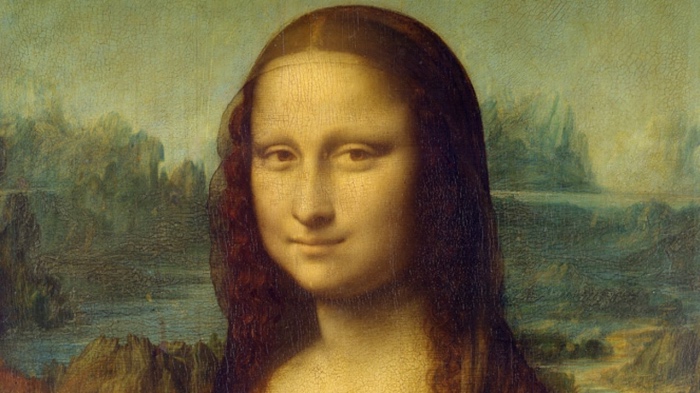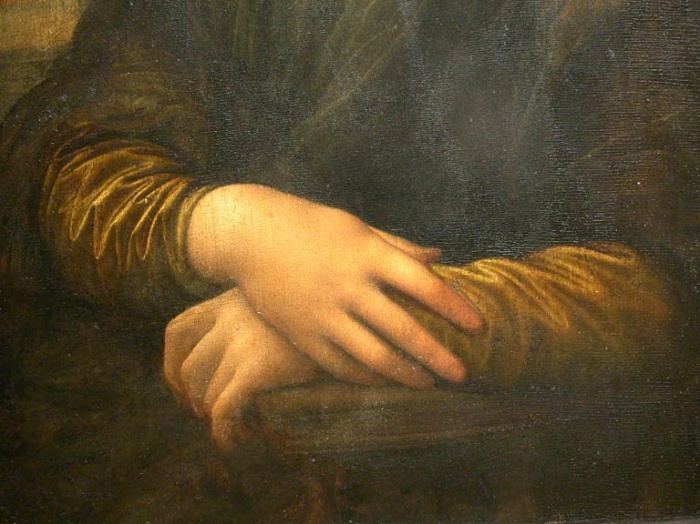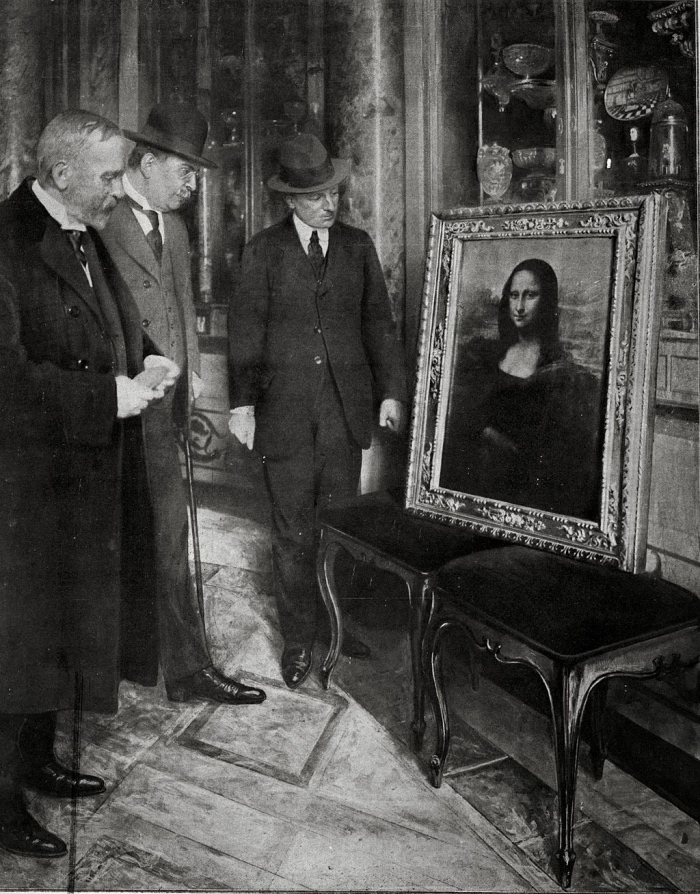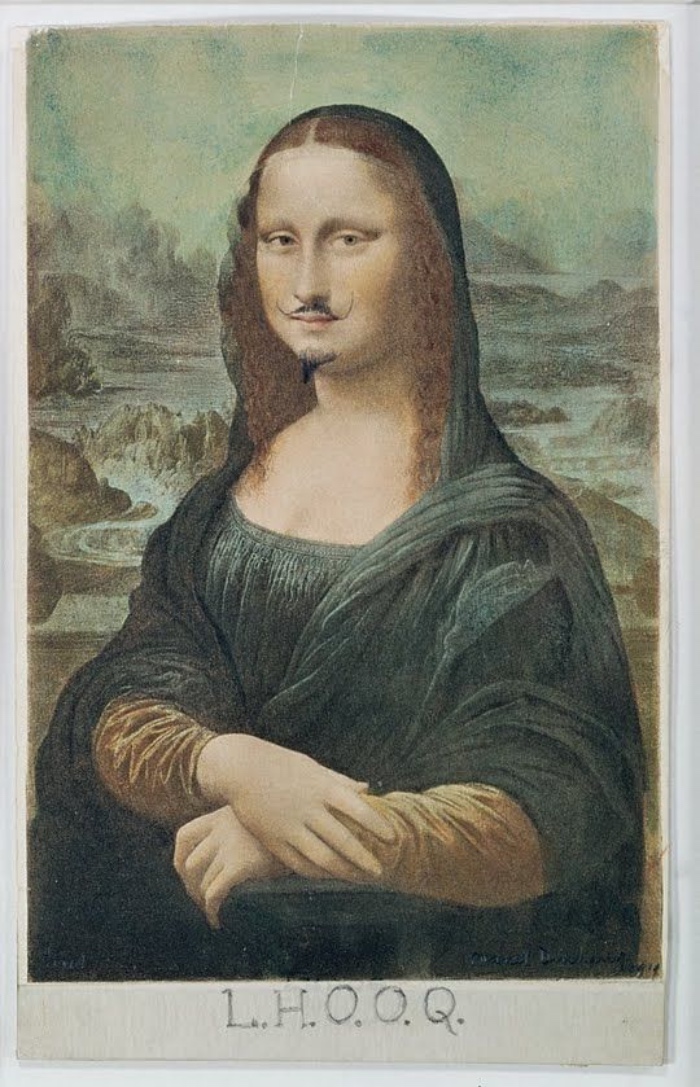
MONA LISA: 5 THINGS TO KNOW ABOUT THE MOST FAMOUS MASTERPIECE IN THE WORLD
The Mona Lisa is considered, together with The Last Supper, Leonardo da Vinci’s masterpiece.
It’s the painting which more than others has fascinated critics and the public because of her enigmatic smile and the rarefied atmosphere of the landscape.
Leonardo’s Mona Lisa is so famous that when you see it at the Louvre museum perhaps its small size will disappoint you. But we have heard some many people talking about it so many times that we feel like we know her, but, basically, we don’t know anything about this painting.
Thus, here is a post containing 5 things to know about Leonardo’s Mona Lisa.

1 – WHEN LEONARDO PAINTED THE MONA LISA
Leonardo began working on the Mona Lisa in 1503, and he reworked it in different times; he always took it with him, and brought it to France with him.
The fact that Leonardo da Vinci never parted with it has fostered several myths and mysteries: from the theory that the painting depicts a pregnant woman or Leonardo’s mother, up to the idea that the painting holds Leonardo’s philosophical thought, according to which man and nature are connected harmoniously.
2 – WHO MONA LISA IS
Giorgio Vasari was the first to indicate the existence of this painting by Leonardo, and in 1550 he claimed that the painting portrayed Mona Lisa, the wife of the Florentine merchant Francesco del Giocondo. But over the centuries, this affirmation has been often called into question, especially because Francesco del Giocondo never requested the artwork.
This element has paved the way to several theories, and one of these is that, actually, the woman depicted in the painting isn’t Mona Lisa, but rather a mysterious lover of a member of the Medici family, and maybe her mysterious smile and her hands placed on her womb reveal her secret pregnancy.
3 – WHY THE MONA LISA IS HOUSED AT THE LOUVRE MUSEUM
It was Leonardo himself that brought the painting to France, when he moved to the court of Francis I of France.
Therefore, the painting was stolen neither by the French nor by Napoleon, like some people keep on thinking.
The Mona Lisa has been in France since 1517, and it was moved to the Louvre museum during Napoleon’s reign.

La Gioconda agli Uffizi di Firenze nel 1913, dopo il ritrovamento.
4 – THE THEFT OF THE MONA LISA
On August 20th 1911, Vincenzo Peruggia, an Italian house painter, stole Leonardo’s Mona Lisa.
The man, convinced that the artwork had been stolen by Napoleon, hid inside the Louvre at the closing time, took the painting and remained closed in a closet overnight.
The following day, at the opening time, he exit undisturbed the museum, concealing the Mona Lisa under his coat.
The thief was caught only in 1913 when he tried to sell the Mona Lisa to an art dealer, who turned up for the appointment to see the painting together with the director of the Uffizi Gallery.
READ ALSO: The Uffizi Gallery, how to book your ticket.
5 – WHY MONA LISA IS SUCCESSFUL
The Mona Lisa is very famous, and for this reason has been reproduced, copied and re-elaborated in a myriad of ways.
Probably, the first reworked version was Raphael’s, who saw the Mona Lisa in Florence in the early 16th century, and it would inspire him to paint the portrait of Maddalena Strozzi in 1506.
Later, in 1916, Marcel Duchamp added a moustache on a photographic reproduction of the Mona Lisa. It’s the beginning of an endless series of reinterpretations of the famous Leonardo’s painting and which has transformed it into a timeless icon.

La Gioconda di Duchamp.
Image source: https://it.wikipedia.org


Per Leonardo da Vinci la Gioconda, vista annualmente da milioni di visitatori al Louvre, potrebbe essere un’ultima Madonna che apparirà in tempi apocalittici, senza il Bambino con sé, contrariamente alle molte Madonne da lui precedentemente dipinte. Monna Lisa è la Madonna che precede il Giudizio Universale, di Michelangelo e quello finale ad opera del Figlio. Michelangelo Buonarroti, nella somiglianza tra il Cristo Giudice del Giudizio Universale e la figura di Aman della volta nella Cappella Sistina, persecutore biblico degli ebrei, avrebbe indicato la futura somiglianza apparente tra Gesù è l’Anticristo, come aveva scritto nei primi secoli il Padre della Chiesa Sant’Ippolito di Roma. Cfr. ebook/kindle L’Apocalisse secondo Leonardo e Michelangelo.
Spesso a cercare significati si trovano vicoli ciechi.
Non è che Leonardo ha semplicemente dipinto un ritratto e che questo sia diventato il suo “biglietto da visita” presso Principi e Sovrani per presentare le sue abilità?
Balle! I pochi dipinti di Leonardo riportano soggetti profani compreso il Cenacolo sul quale Alberto Angela ha detto una sequela di castronerie nel suo libro “Gli occhi della Gioconda”. Pag. 157; “…Leonardo decide di rappresentare Giuda, il secondo da desta [sic], non isolato dagli altri apostoli […] si ritrae VOLGENDO LE SPALLE A CRISTO!!!.” Quì mi fermo; ma chi volesse leggere altre simili amenità compri il libro in questione con i migliori auguri !!!.
Sulle opere di Leonardo e sul Cenacolo vengono fuori nuove letture e interpretazioni ogni anno praticamente.
Il Cenacolo è tutto tranne che un soggetto profano.
La fama di questo dipinto ed il suo inestimabile valore si devono soprattutto al furto di Vincenzo Perruggia. Prima di tale evento l’opera non aveva la fama di oggi e neppure la valutazione di oggi.
I fattori del successo della Gioconda e del suo valore inestimabile sono più di uno e non è tutto merito del furto di Peruggia.
La Gioconda è uno dei pochi dipinti di Leonardo (in totale sono una ventina), quindi è di per sé una rarità, inoltre la fama della Gioconda è cresciuta durante il romanticismo.
Il sorriso di Monna Lisa è diventato in quel periodo un modello di bella femminile.
Poi sicuramente ci fu il furto e il suo ritrovamento a Firenze che fece crescere l’attenzione sull’opera e in più nel 1962 la Gioconda venne esposta in varie città americane.
L’opera fu prestata agli Stati Uniti dove fu esposto alla National Gallery di Washington e al Metropolitan Museum di New York (naturalmente accolta al suo arrivo da John Fitzgerald Kennedy, Jacqueline Kennedy e Lyndon Johnson).
Il Louvre ha avuto gioco facile a eleggerla come icona del museo, avrebbe potuto scegliere di promuovere il museo con la Nike di Samotracia oppure con altre opere ma la Gioconda ormai era diventata da sola un mito e il museo ha spinto l’acceleratore su di lei 😉
Ma non porta sfortuna averla in casa ,anchevfinta,vero?
Non credo porti sfortuna sinceramente. La sfortuna è non averne una 😉